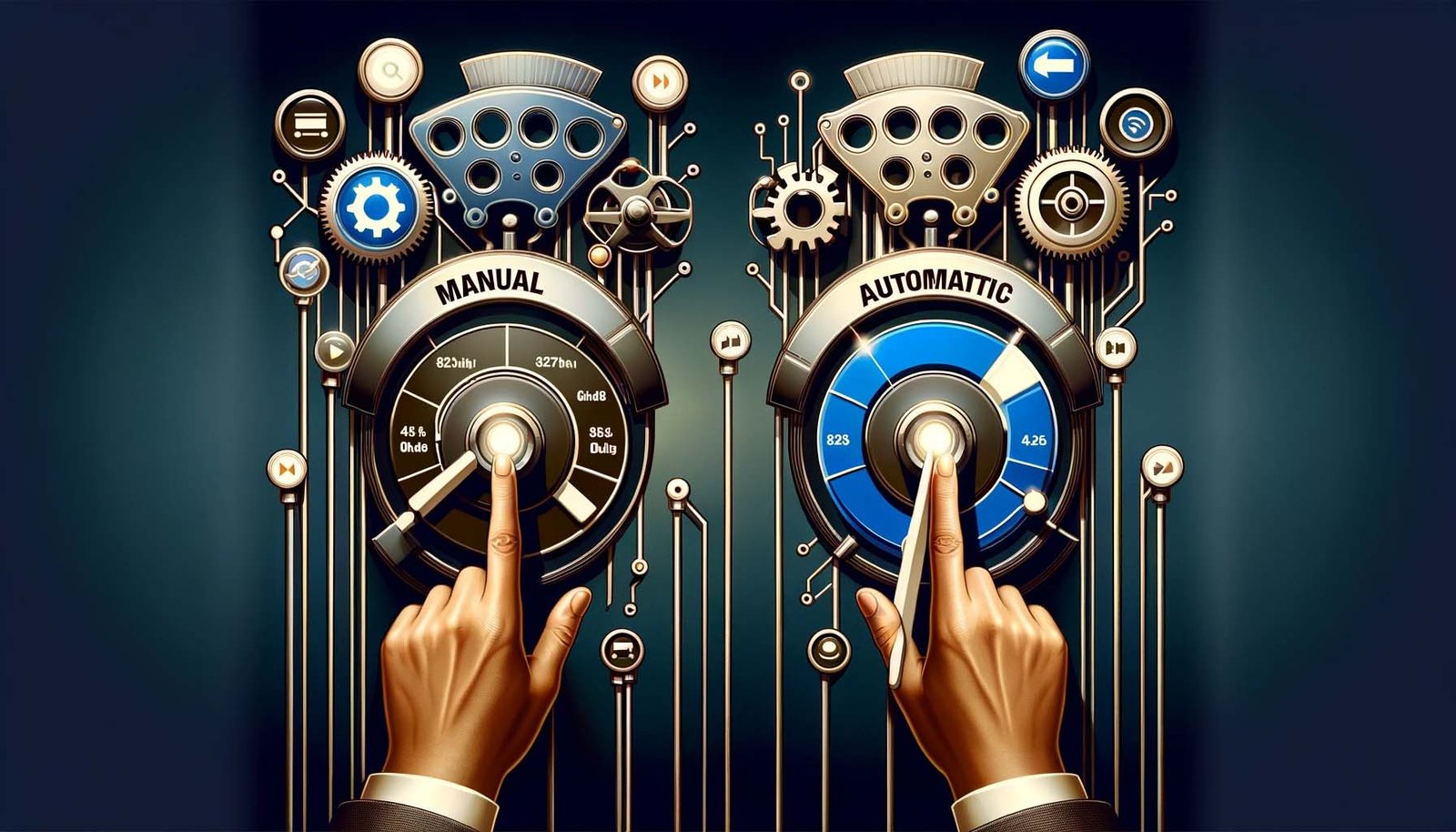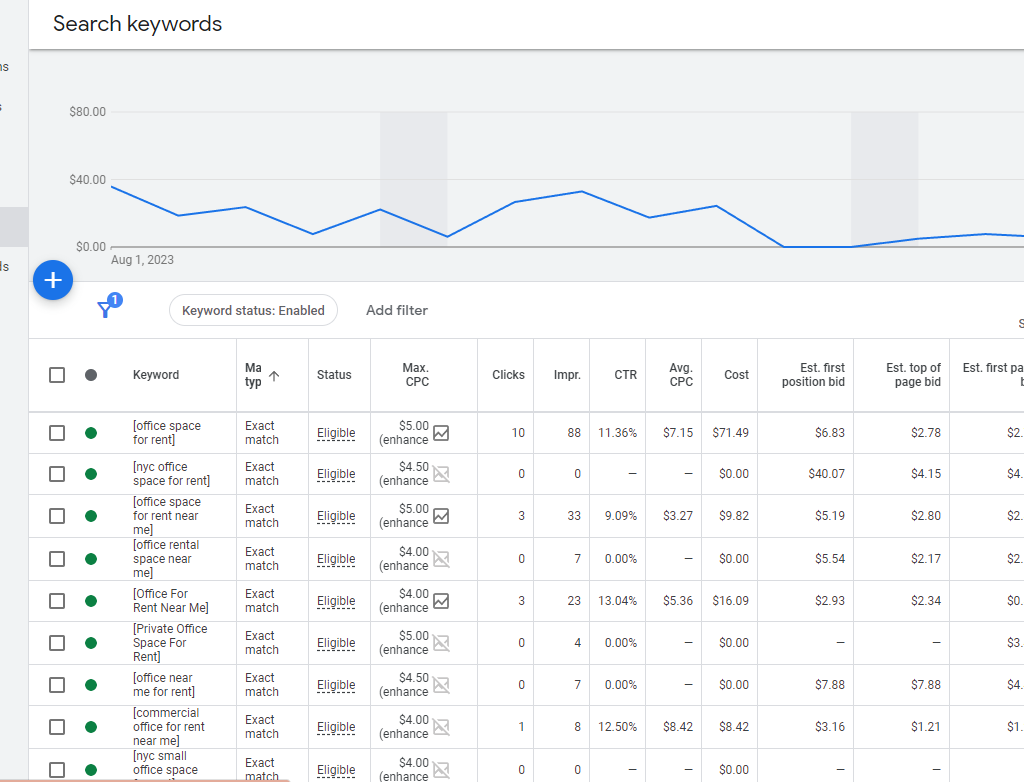Table of Contents
Manual vs Automatic Bidding for Google Ads - Which Should You Use?

Google Ads offers advertisers multiple options for setting bids on keywords and ad groups. The two main approaches are manual bidding and automatic bidding. With manual bidding, you set specific CPCs for individual keywords or ad groups. With automatic bidding, Google Ads uses your conversion data to optimize bids algorithmically towards a target. Both methods have pros and cons. Typically, newer campaigns benefit from manual bids while established campaigns see better results from automated strategies.
Pros And Cons Of Manual Bidding
Manual bidding involves setting bids manually for keywords and ad groups within your Google Ads account. You determine the maximum amount you’re willing to pay for a click based on factors like competition, relevance, and your thresholds for profitability.
Manual bidding gives you maximum control of your Google Ads Account. We here at Blue Sky Advertisement start all of our client’s accounts with manual bidding.
Pros of Manual Bidding
- Precision control over individual keyword/ad group bids
- Can respond quickly to changing market conditions
- Know exactly what you’re paying for each click
Cons of Manual Bidding
- Extremely time-intensive to manage bids across large accounts
- Doesn’t dynamically optimize for conversions like automated bidding

Pros And Cons Of Automatic Bidding
Automated bidding relies on Google’s algorithms and machine learning to set optimal bids in order to hit your targeted return on ad spend. Common strategies include Target CPA and Target ROAS.
Pros of Automated Bidding
- Saves time by reducing bid management
- Dynamically optimizes bids to hit conversion targets
- Leverages Google’s data and algorithms
Cons of Automated Bidding
- Less control over granular bid adjustments
- Can take time for the system to optimize itself
- Requires sufficient conversion data
When Manual Bidding is Advantageous
Manual bidding gives granular control over bids, making it better in some situations:
- For new campaigns with limited data
- To have precision control over individual keywords
- When focused more on click volume vs conversions
When first starting with Google Ads, you likely won’t have enough data for automated bidding to work well. Manual bidding lets you research keywords, estimate competitiveness, and set informed bids to get new campaigns started.
One key advantage of manual bidding is the ability to adjust bids based on the unique value of each keyword. Granular control allows you to aggressively bid on your most effective keywords while potentially lowering bids on less converting terms.
If your primary goal is driving maximum click volume vs. conversion volume, manual bidding gives you the control to pursue clicks aggressively. You can manually increase bids to improve ad position and impressions without considering ROI. Just know focusing solely on clicks is rarely sustainable long-term.
When Automated Bidding Excel?
In contrast, automated bidding strategies work best in these cases:
- For established campaigns with sufficient conversion data
- To set a target and let Google optimize bids
- When priority is on conversion volume and ROI
Automated bidding relies heavily on having enough data for algorithms to optimize effectively. With sufficient conversions, Google can analyze performance patterns and adjust bids to hit your targets.
Advertisers that take a hands-off approach appreciate being able to set a return target like cost-per-acquisition and letting Google handle bid optimizations using machine learning. This frees you to focus less on bid tactics and more on strategic initiatives.
Since automated bidding directly optimizes for conversion volume across your account, it excels when profitability is the goal. Algorithms efficiently determine bids needed on each keyword to maintain or improve ROI performance.
Tips for Getting the Most from Each Bidding Method
With manual bidding, leverage Google’s bid simulator to preview how changes may impact your ad position, impressions, and other metrics. This allows you to set informed bids based on data.
For automated bidding, initially set your target cost-per-conversion or return on ad spend conservatively. Give the algorithms time to optimize before getting aggressive. Checking on progress weekly helps gauge when to raise targets.
- For manual bidding – use bid simulations to estimate the impact
- For automated bidding – set conservative targets and allow time for optimization
Conclusion
In summary, there is no universally superior Google Ads bidding method. Advertisers will likely leverage both manual and automated strategies across different campaigns and stages.
- Both manual and automated bidding have pros and cons
- Choose method based on campaign maturity, goals, time available
- Test and refine approaches for optimal results
Carefully consider factors like campaign maturity, your goals, and how much time you have for active bid management. Test a mix of approaches and refine over time to determine the optimal blend for each campaign.
With the right bidding strategies powering your Google Ads efforts, you will maximize relevance, conversion volume, and return on ad spend.
Looking for a Google Ads Management Company? Contact us at https://blueskyadvertisement.com Ask for Chrispien
FAQ
What is the main difference between manual bidding and automated bidding?
With manual bidding, you set individual keyword/ad group bids yourself. With automated, Google uses algorithms and targets you set to optimize bids.
When should I use manual bidding for Google Ads?
Manual bidding works well for new campaigns, if you need granular keyword control, or are prioritizing clicks over conversions.
When is automated bidding better for Google Ads?
Automated bidding excels for mature campaigns with sufficient conversion data and if you prioritize conversion volume and ROI.
What are the pros of manual bidding?
Pros include precision keyword control, fast bid adjustments, and maximizing clicks.
What are the pros of automated bidding?
Pros include time savings, ROI optimization, and leveraging Google’s algorithms.
What are cons of manual bidding?
Cons include time required to manage and not optimizing for conversions.
What are cons of automated bidding?
Cons include less control and taking time for the system to optimize effectively.





